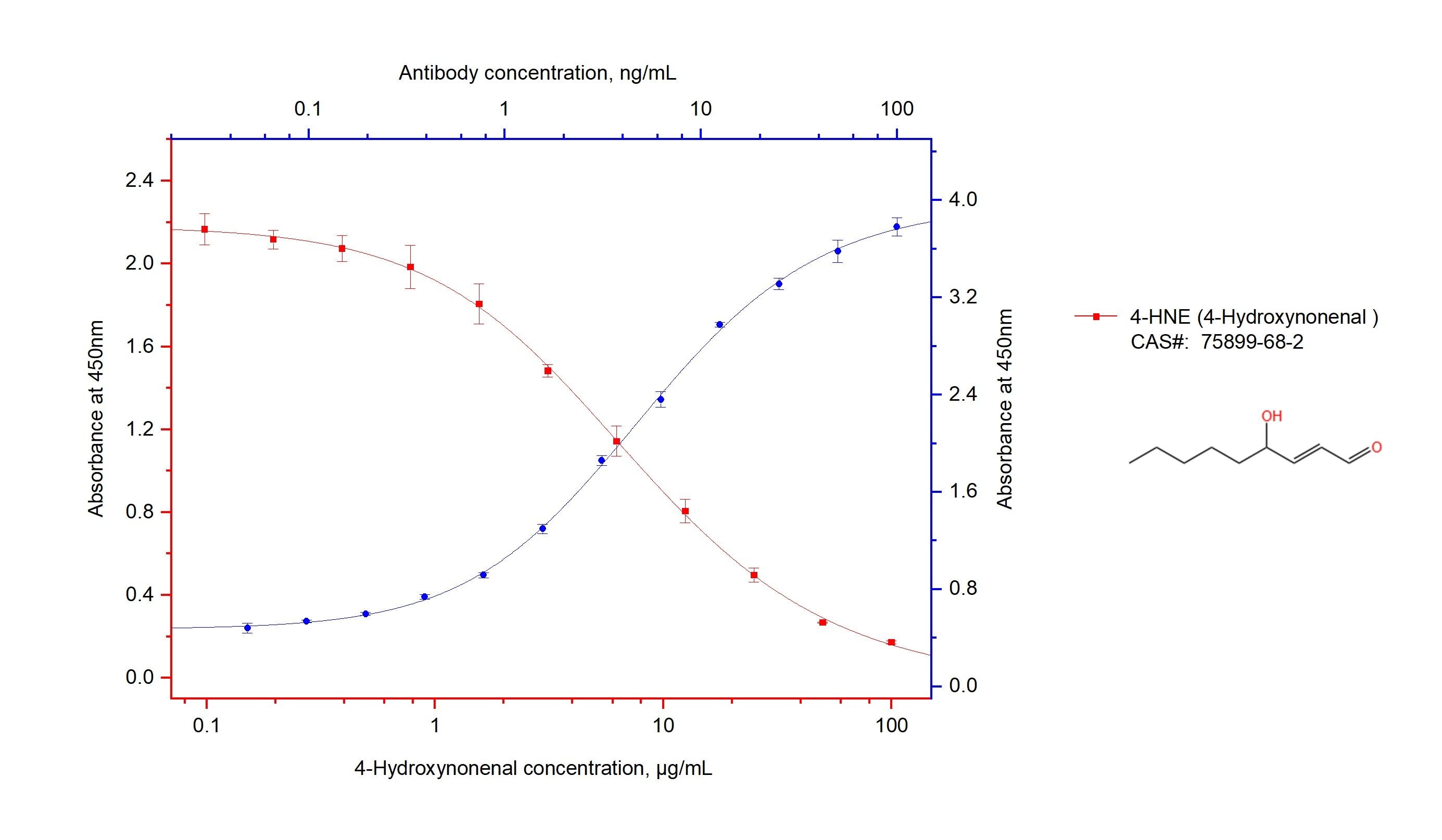Anticorps Monoclonal anti-4-Hydroxynonenal
4-Hydroxynonenal Monoclonal Antibody for ELISA
Hôte / Isotype
Mouse / IgG2a
Réactivité testée
4-hydroxynonenal, chemical compound et plus (2)
Applications
WB, IHC, IF, ELISA
Conjugaison
Non conjugué
CloneNo.
2C1D10
N° de cat : 68538-1-Ig
Synonymes
Galerie de données de validation
Applications testées
| Résultats positifs en ELISA | 4-Hydroxynonenal, |
Dilution recommandée
| Application | Dilution |
|---|---|
| Test immuno-enzymatique (ELISA) | ELISA : 1:5000-1:20000 |
| It is recommended that this reagent should be titrated in each testing system to obtain optimal results. | |
| Sample-dependent, check data in validation data gallery | |
Applications publiées
| WB | See 1 publications below |
| IHC | See 1 publications below |
| IF | See 1 publications below |
Informations sur le produit
68538-1-Ig cible 4-Hydroxynonenal dans les applications de WB, IHC, IF, ELISA et montre une réactivité avec des échantillons 4-hydroxynonenal, chemical compound
| Réactivité | 4-hydroxynonenal, chemical compound |
| Réactivité citée | rat, souris |
| Hôte / Isotype | Mouse / IgG2a |
| Clonalité | Monoclonal |
| Type | Anticorps |
| Immunogène | PTG |
| Nom complet | 4-Hydroxynonenal |
| Symbole du gène | |
| Identification du gène (NCBI) | |
| Conjugaison | Non conjugué |
| Forme | Liquide |
| Méthode de purification | Purification par protéine A |
| Tampon de stockage | PBS with 0.02% sodium azide and 50% glycerol |
| Conditions de stockage | Stocker à -20°C. Stable pendant un an après l'expédition. L'aliquotage n'est pas nécessaire pour le stockage à -20oC Les 20ul contiennent 0,1% de BSA. |
Informations générales
4-Hydroxynonenal is a uremic toxin. Uremic toxins can be subdivided into three major groups based upon their chemical and physical characteristics: 1) small, water-soluble, non-protein-bound compounds, such as urea; 2) small, lipid-soluble and/or protein-bound compounds, such as the phenols and 3) larger so-called middle-molecules, such as beta2-microglobulin. 4-Hydroxynonenal (4-HNE) is a major aldehydic product of ω-6-unsaturated fatty acid peroxidation. It is considered a lipid peroxidation specific marker. 4-HNE has been found to induce differentiation and inhibit proliferation of HL-60 human leukemic cells. It has also been found to induce murine alveolar macrophage cell death. 4-HNE has been shown to inhibit State 3 respiration, causing a transient cytosolic Ca2+ increase. In addition, it irreversibly inhibits Na+-K+-ATPase activity.
Publications
| Species | Application | Title |
|---|---|---|
Free Radic Biol Med Mitochondrial ACSS1-K635 acetylation knock-in mice exhibit altered liver lipid metabolism on a ketogenic diet | ||
Adv Healthc Mater Extracellular Vesicles from Adipose-Derived Mesenchymal Stem Cells Combined with PEG Hydrogel Alleviate Maternal Simulated Birth Injury in a Rat Model | ||
Biomaterials Molybdenum nanodots act as antioxidants for photothermal therapy osteoarthritis |


